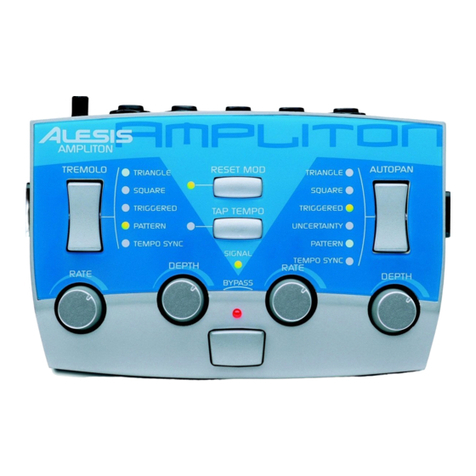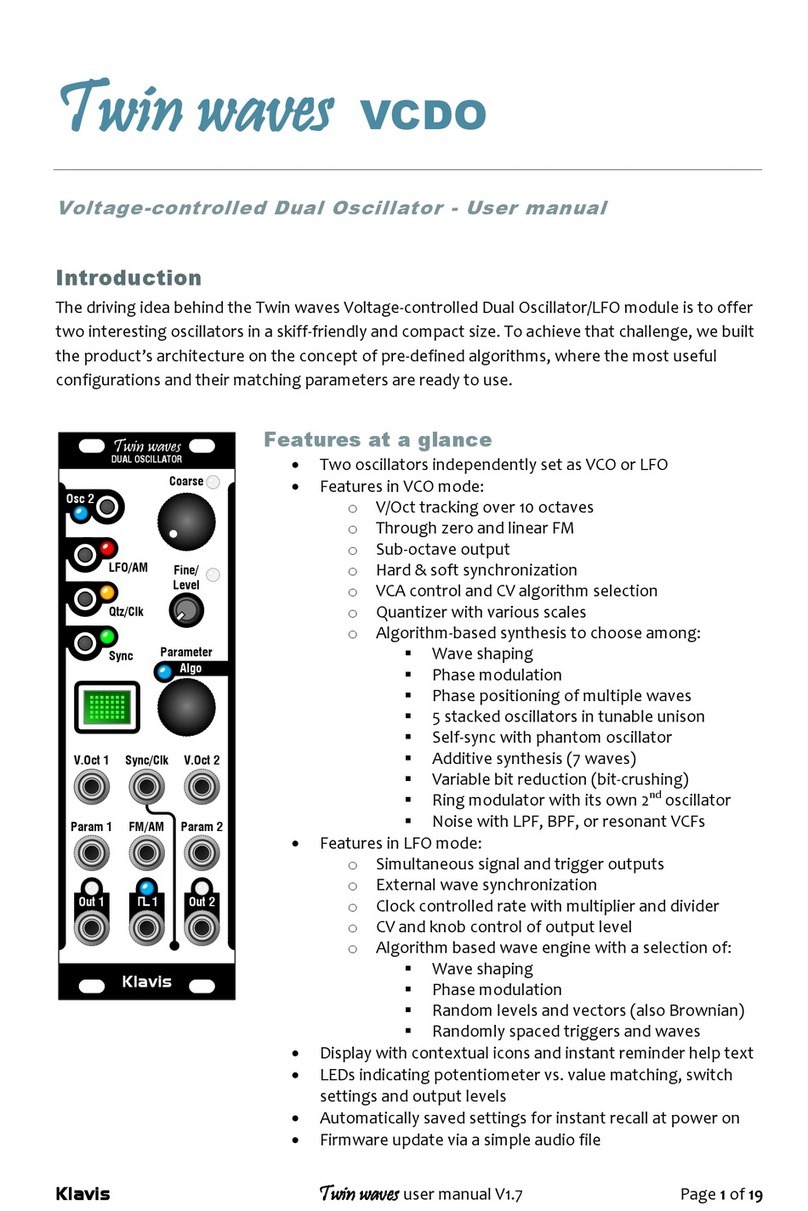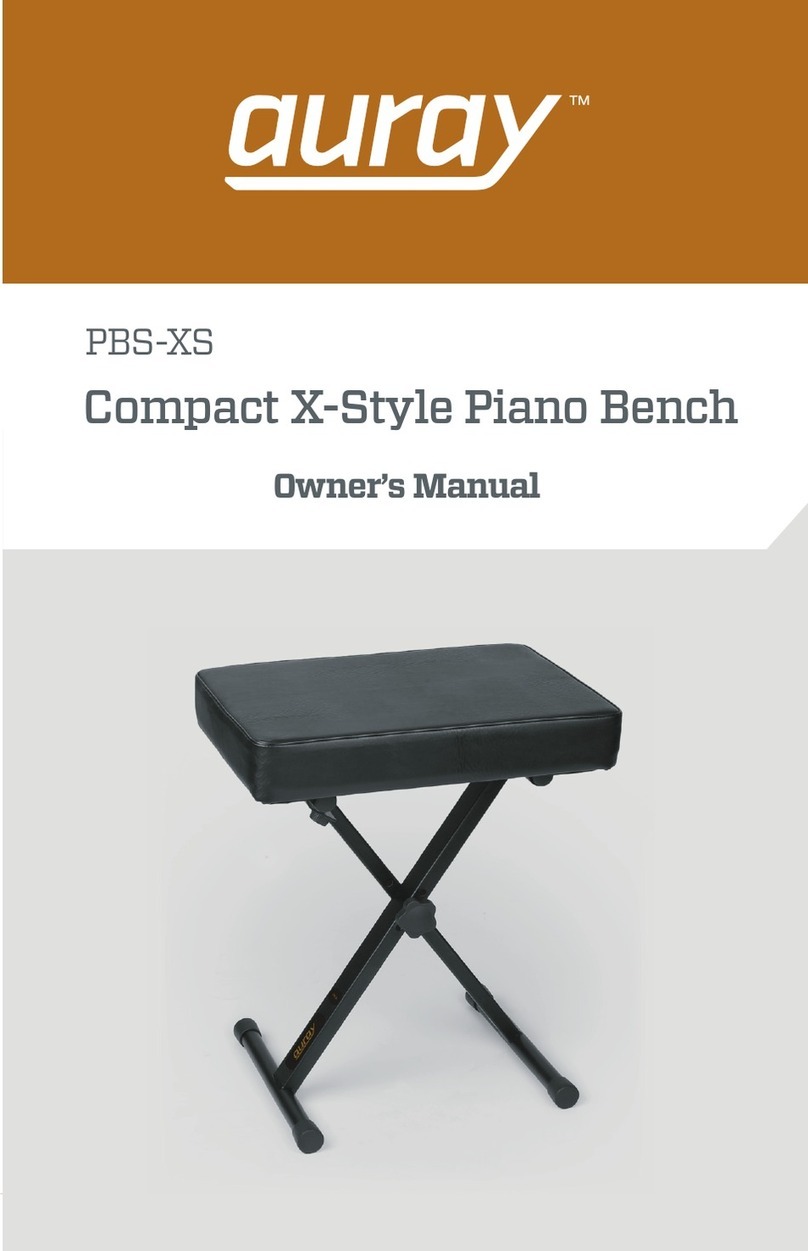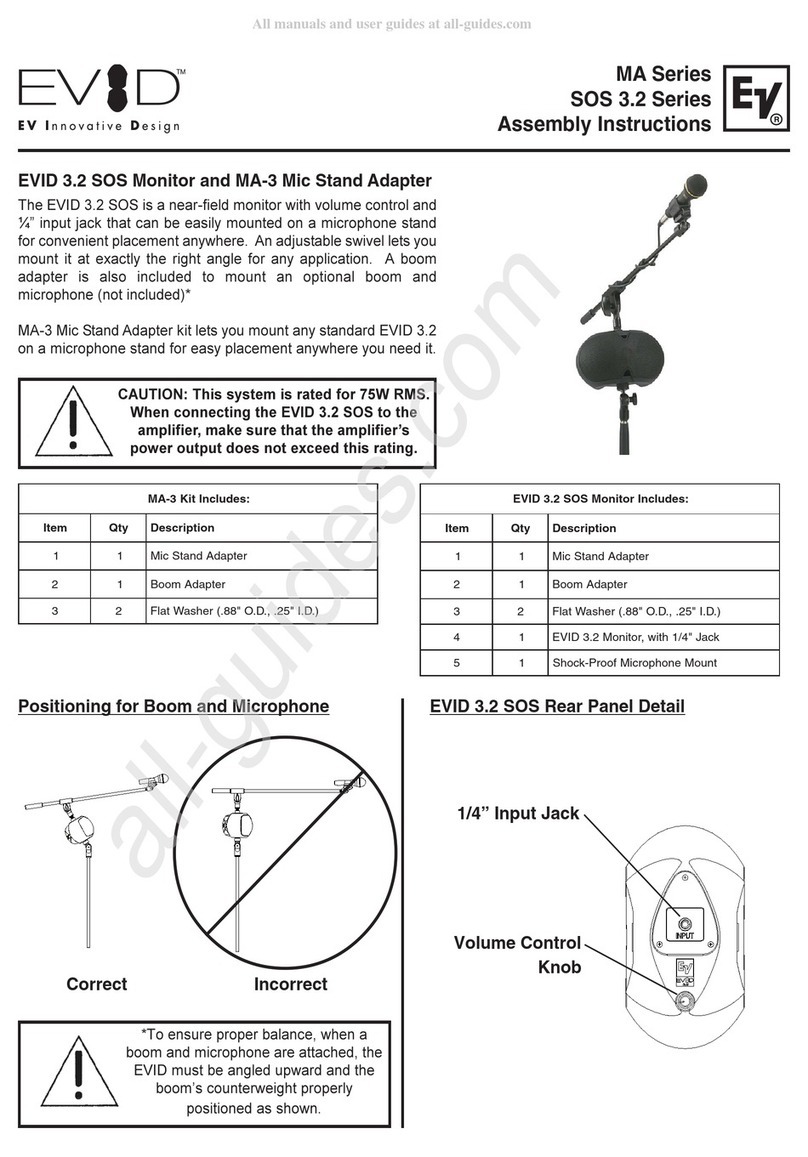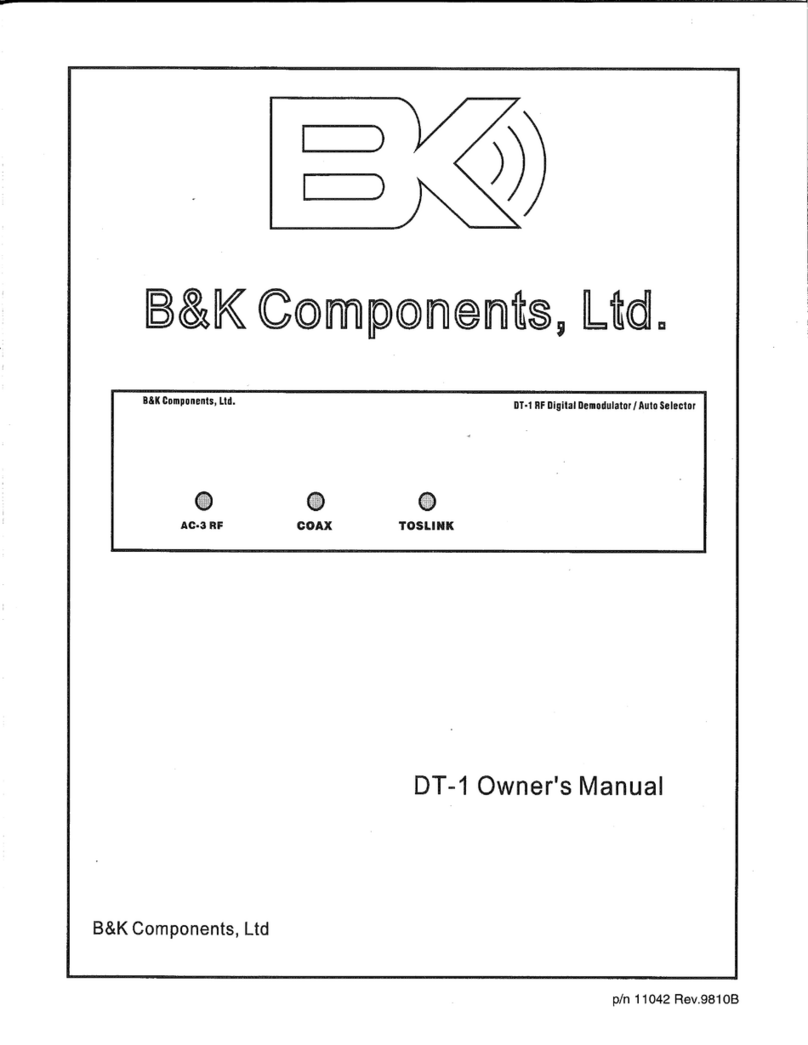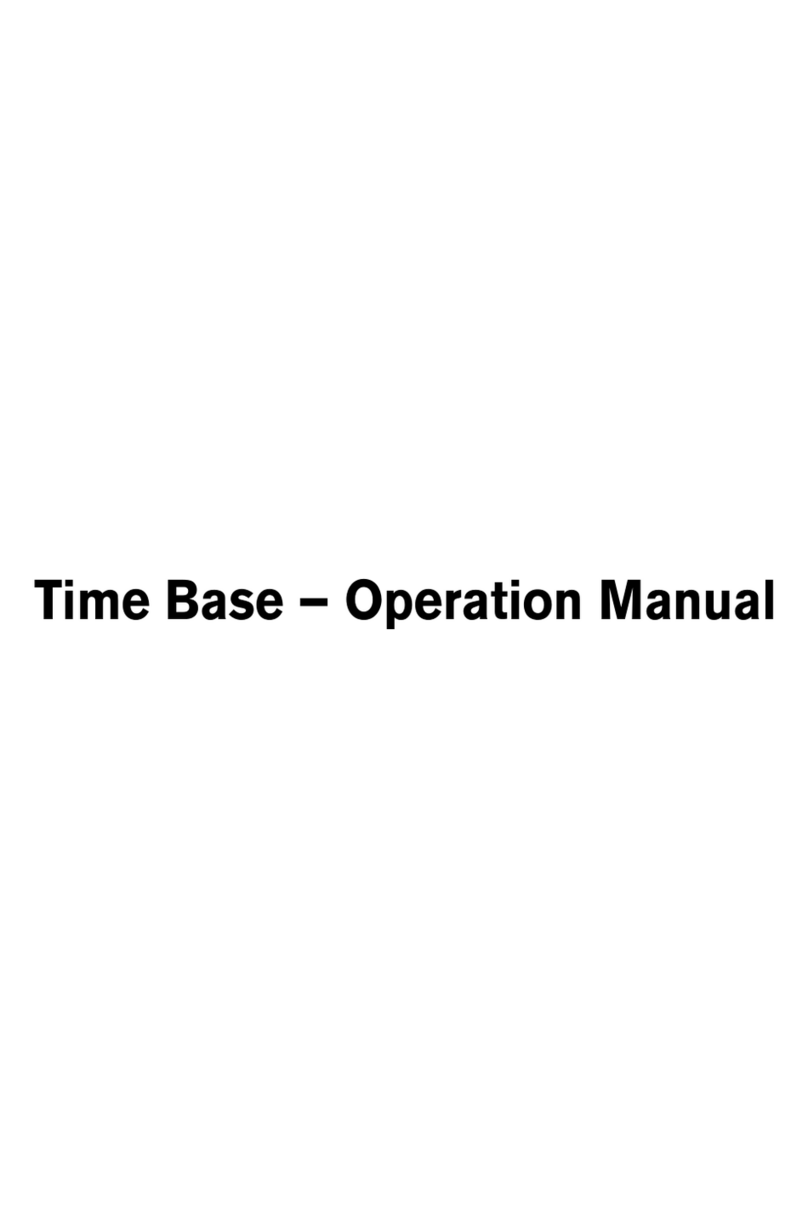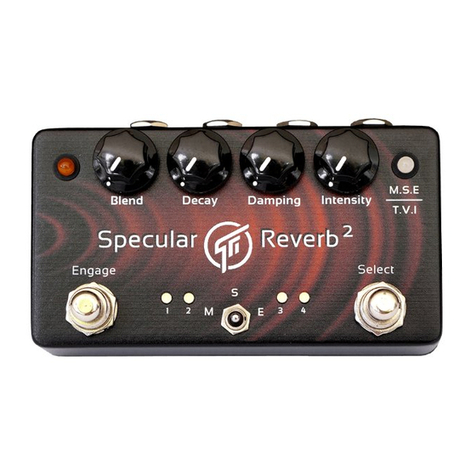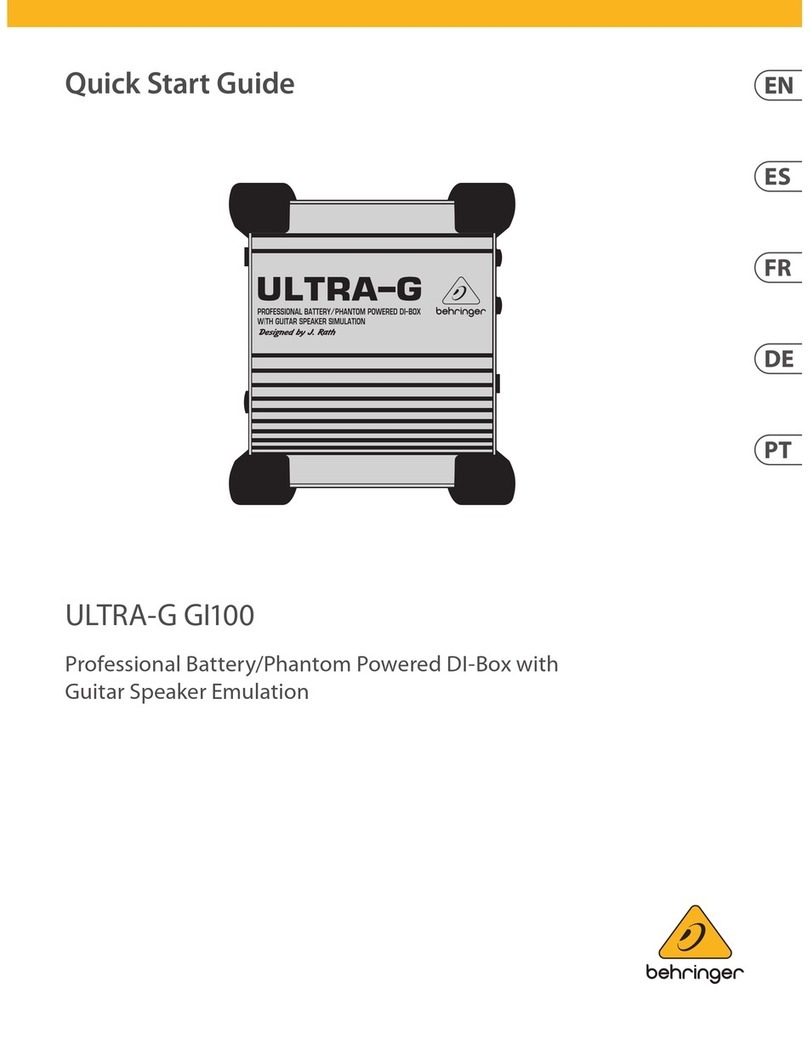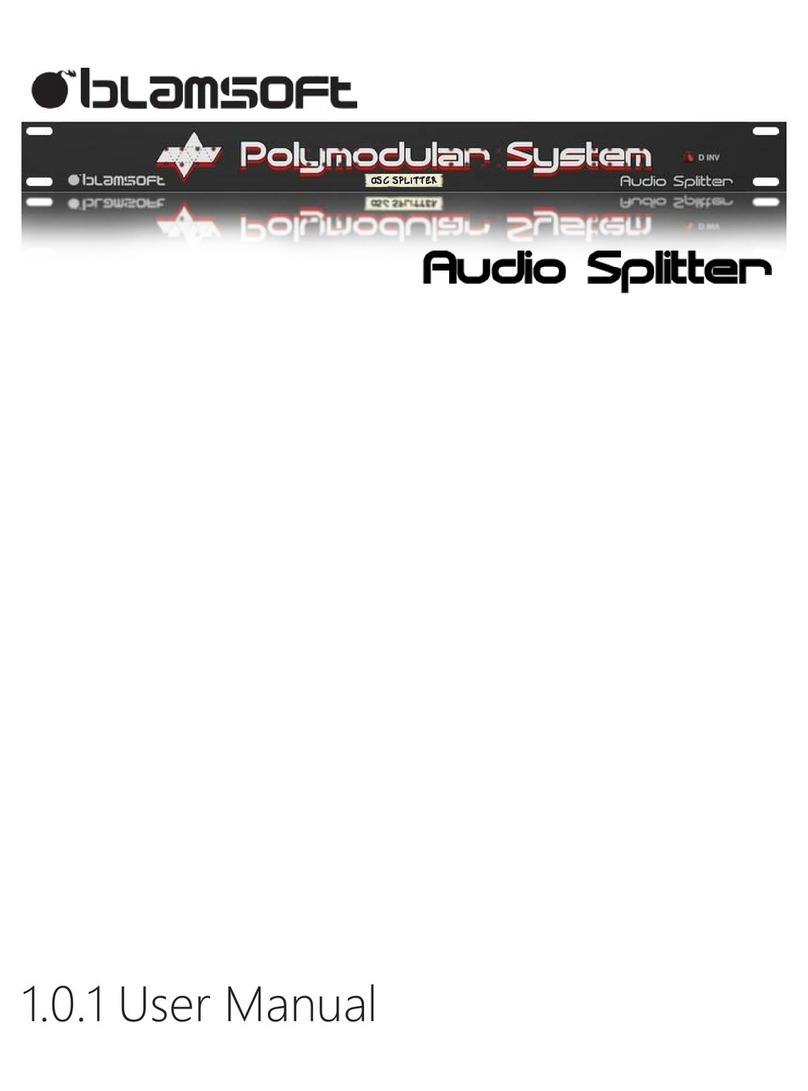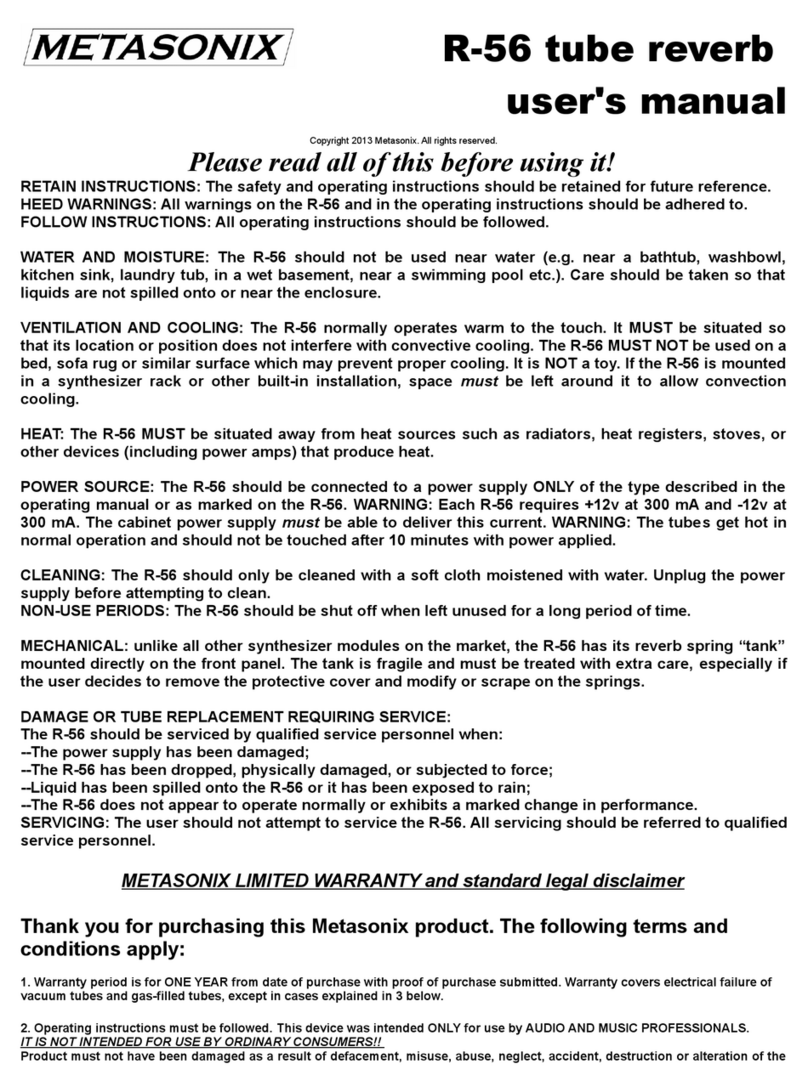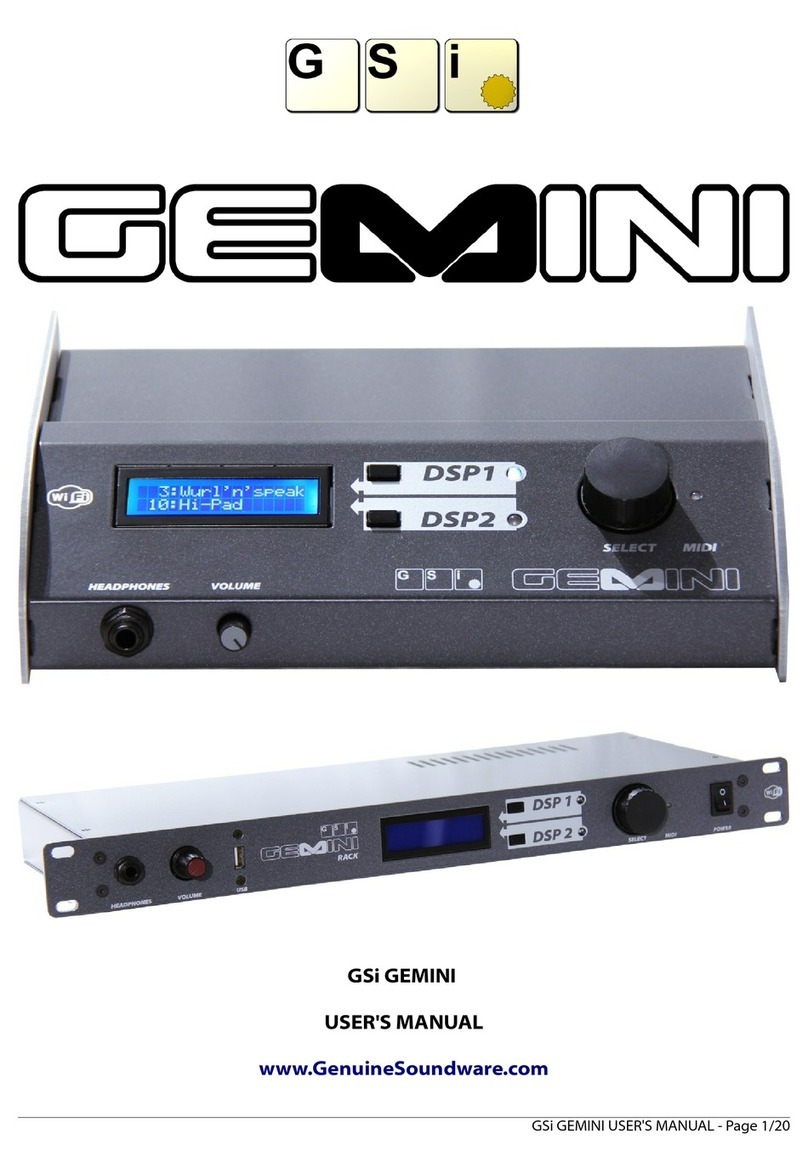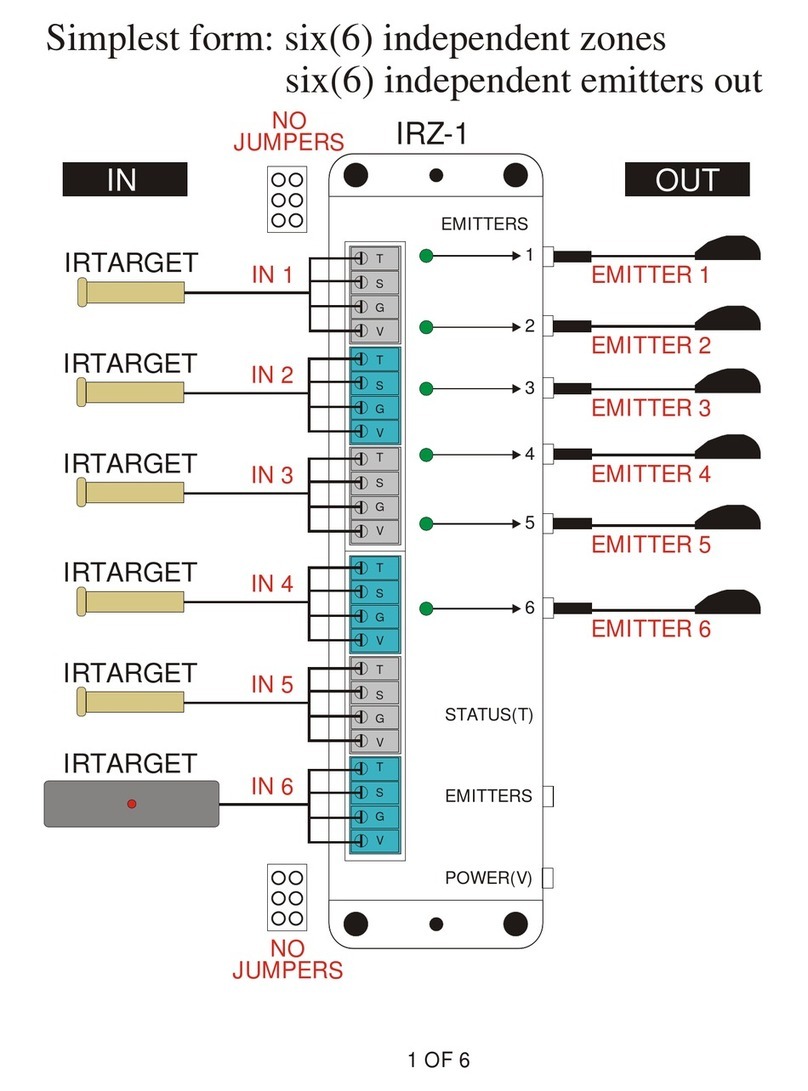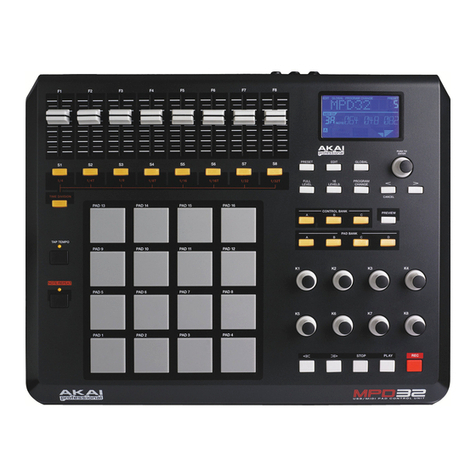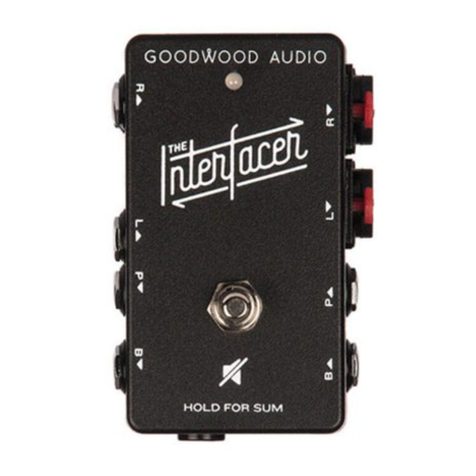Imagine Videotek LLM-1770 User manual

Delivering the Moment
Videotek™LLM-1770/LLM-1770-D
Loudness Logger and Monitor
Revision D
Part Number P061-0010
Installation and Operation Manual

© 2014 Imagine Communications Corp. Proprietary and Confidential
Publication Information
© 2014 Imagine Communications Corp. Proprietary and Confidential.
Imagine Communications considers this document and its contents to be proprietary and confidential. Except for
making a reasonable number of copies for your own internal use, you may not reproduce this publication, or any
part thereof, in any form, by any method, for any purpose, or in any language other than English without the
written consent of Imagine Communications. All others uses are illegal.
This publication is designed to assist in the use of the product as it exists on the date of publication of this manual,
and may not reflect the product at the current time or an unknown time in the future. This publication does not in
any way warrant description accuracy or guarantee the use for the product to which it refers. Imagine
Communications reserves the right, without notice to make such changes in equipment, design, specifications,
components, or documentation as progress may warrant to improve the performance of the product.
Trademarks
Videotek™is a trademark of Imagine Communications or its subsidiaries.
Microsoft® and Windows® are registered trademarks of Microsoft Corporation. All other trademarks and trade
names are the property of their respective companies.
Contact Information
Imagine Communications has office locations around the world. For locations and contact information see:
http://www.imaginecommunications.com/contact-us/
Support Contact Information
For support contact information see:
Support Contacts: http://www.imaginecommunications.com/services/technical-support/
eCustomer Portal: http://support.imaginecommunications.com

iii
Contents
About This Manual................................................................................................. 1
Intended Audience ........................................................................................................ 1
Finding Specific Information ........................................................................................ 1
Manual Information ...................................................................................................... 2
Revision History ......................................................................................................... 2
Writing Conventions .................................................................................................. 2
Obtaining Documents ................................................................................................ 3
Unpacking/Shipping Information ................................................................................ 3
Unpacking a Product ................................................................................................. 3
Product Servicing ....................................................................................................... 3
Returning a Product ................................................................................................... 3
Operator’s Safety Summary ......................................................................................... 4
Ensuring Safety .......................................................................................................... 4
Explanation of Symbols .............................................................................................. 5
Certification Labels and Symbol Locations .................................................................. 5
Directives and Compliances .......................................................................................... 6
Restriction on Hazardous Substances (RoHS) Directive ................................................ 6
Waste from Electrical and Electronic Equipment (WEEE) Directive ............................... 6
Chapter 1 Introduction.............................................................................................................. 9
Product Features ........................................................................................................... 9
Standard Features ...................................................................................................... 9
Optional Features .................................................................................................... 10
Applicable Standards ............................................................................................... 10
Front Panel and Back Panel Views ............................................................................. 11
Safety ........................................................................................................................... 11
LLM-1770 Service and Support .................................................................................. 12
Chapter 2 Installation............................................................................................................. 13
Installation Procedures ............................................................................................... 13
Inspecting the Shipment .......................................................................................... 13
Rack Mounting the LLM-1770 ................................................................................. 14
Connecting the LLM-1770 ........................................................................................... 16

Contents
iv
Ethernet Setup .............................................................................................................17
Chapter 3 Operation..................................................................................................................19
Terms ............................................................................................................................19
Controlling the LLM-1770 ...........................................................................................19
Front Panel Controls ...............................................................................................20
Web-Based Panel Controls .......................................................................................22
Front Panel Selections .................................................................................................24
Selecting a Function .................................................................................................24
Status Display ..........................................................................................................24
Bars Display .................................................................................................................26
Loudness Display .........................................................................................................27
ATSC A/85 Loudness Mode ......................................................................................28
EBU R 128 Loudness Mode ......................................................................................29
ARIB TR-B32 Loudness Mode ...................................................................................30
Custom Loudness Mode ..........................................................................................31
Alarm Display ..............................................................................................................32
Meter Based Alarms .................................................................................................32
Loudness Alarms ......................................................................................................33
Dolby Alarms ...........................................................................................................33
Time Code Alarms ...................................................................................................33
General Purpose Interface (GPI) Alarms ....................................................................33
Accessing and Navigating the Setup Menu ..............................................................34
Chapter 4 Setup Menu Functions........................................................................................35
Setup Menus and Alarm Tables ..................................................................................36
Meter Mapping Setup Menu ......................................................................................37
Menu Selections ......................................................................................................37
Menu Selection Descriptions ....................................................................................38
Loudness Mapping Setup Menu ................................................................................38
Menu Selections ......................................................................................................38
Menu Selection Descriptions ....................................................................................39
Loudness Display Setup Menu ...................................................................................40
Menu Selections ......................................................................................................40
Menu Selection Descriptions ....................................................................................42
Dolby Setup Menu ......................................................................................................45
Menu Selections ......................................................................................................45
Menu Selection Descriptions ....................................................................................46
Headphones Setup Menu ...........................................................................................46
Menu Selections ......................................................................................................47
Menu Selection Descriptions ....................................................................................47
Alarms Setup Menu .....................................................................................................47
Clear Setup Menu 48
Menu Selections ......................................................................................................48
Menu Selection Descriptions ....................................................................................48
Unit Configuration Setup Menu .................................................................................48

VSG-4TSG
Installation and Operation Manual v
Menu Selections ...................................................................................................... 48
Menu Selection Descriptions .................................................................................... 49
USB Utilities Menu Selections .................................................................................... 51
Menu Selections ...................................................................................................... 51
Menu Selection Descriptions .................................................................................... 51
About Menu ................................................................................................................ 53
Menu Selections ...................................................................................................... 53
Menu Selection Descriptions .................................................................................... 54
Chapter 5 Alarm Descriptions.............................................................................................. 57
Alarm Setup Menus ....................................................................................................57
Meter Based Alarms Setup Menu .............................................................................. 58
Menu Selections ...................................................................................................... 58
Menu Selection Descriptions .................................................................................... 58
Loudness Alarm Setup Menu ..................................................................................... 59
Menu Selections ...................................................................................................... 59
Menu Selection Descriptions .................................................................................... 59
Dolby Alarms Setup Menu ......................................................................................... 60
Menu Selections ...................................................................................................... 60
Menu Selection Descriptions .................................................................................... 60
Time Code Alarms Setup Menu .................................................................................. 60
Menu Selections ...................................................................................................... 60
Menu Selection Descriptions .................................................................................... 61
GPI Alarms Setup Menu .............................................................................................. 61
Menu Selections ...................................................................................................... 61
Menu Selection Descriptions .................................................................................... 61
Chapter 6 External Control.................................................................................................... 63
Browser Interface ........................................................................................................ 63
Accessing the Web-Based Control Panel ................................................................... 64
Accessing the Index of Captures ................................................................................ 65
Managing User Accounts ............................................................................................ 66
Adding Accounts ..................................................................................................... 66
Editing Accounts ..................................................................................................... 67
Deleting Accounts ................................................................................................... 67
Accessing the About Page .......................................................................................... 68
Chapter 7 Troubleshooting.................................................................................................... 71
Initial Checks ............................................................................................................... 71
Restarting .................................................................................................................... 71
Problems, Causes, and Solutions ............................................................................... 72
Chapter 8 Specifications........................................................................................................ 73

Contents
vi
Inputs ...........................................................................................................................73
Outputs ........................................................................................................................74
OLED Display ...............................................................................................................75
Communication Interfaces ..........................................................................................75
Ethernet .......................................................................................................................75
Power Requirements ...................................................................................................76
Mechanical ...................................................................................................................76
Environmental .............................................................................................................76
Standard and Optional Accessories ...........................................................................77
Appendix A Pinouts.......................................................................................................................79
LTC/GPI D-Sub Connector ............................................................................................79
Ethernet RJ45 Connector ............................................................................................80
Power Connector .........................................................................................................80
Appendix B Log File Contents..................................................................................................81
Naming Conventions ...................................................................................................81
File Type Contents and Samples .................................................................................82
Data File Contents ...................................................................................................82
Sample Data File ......................................................................................................82
Alarm File Contents .................................................................................................83
Sample Alarm File ....................................................................................................83
Summary File Contents ............................................................................................84
Appendix C Glossary.....................................................................................................................85
Appendix D Open Source Software Copyright Information.......................................97
FreeType License ..........................................................................................................97
LibJPEG License ............................................................................................................97
CMU/UCD Copyright Notice .......................................................................................97
Networks Associates Technology, Inc. Copyright Notice (BSD) ................................98
Cambridge Broadband Ltd. Copyright Notice (BSD) .................................................98
Sun Microsystems, Inc. Copyright Notice (BSD) ........................................................99
Sparta, Inc. Copyright Notice (BSD) .........................................................................100
Cisco/BUPTNIC Copyright Notice (BSD) ....................................................................100
Fabasoft R&D Software GmbH & Co. KG Copyright Notice (BSD) .........................101
The GNU v2 License ...................................................................................................101
GNU General Public License ...................................................................................101
GNU General Public License ...................................................................................102
GNU Lesser Public License .........................................................................................106
GNU Lesser General Public License .........................................................................106
GNU Lesser General Public License .........................................................................108

1
About This Manual
This manual details the features, installation procedures, operational procedures, and
specifications of the LLM-1770 loudness logger and monitor.
About This Manual provides an overview of this installation and operation manual,
describes manual conventions, and tells you where to look for specific information. This
section also gives you important information on unpacking and shipping your product.
Intended Audience
This manual is written for engineers, technicians, and operators responsible for the
installation, setup, and/or operation of the LLM-1770 loudness logger and monitor.
Finding Specific Information
Table P-1 shows the location of specific information in this manual.
Table P-1 Finding Specific Information in this Guide
If you are looking for Go to
Alarm descriptions Page 57
Back panel information Page 16
Browser interface Page 63
Connecting Page 16
Control panels Page 11
Customer Service information Page 12
Ethernet setup and configuration Page 17
External control Page 63
Features Page 9
Front panel information Page 11, Page 20, Page 22
Mounting the unit in a DRT-4A case Page 14
Options Page 10

About This Manual
2
Manual Information
This section provides information about the revision history of the manual, writing
conventions used for ease of understanding as well as for navigation throughout the
document, and information about obtaining other product manuals.
Revision History
Table P-2 Manual Revision History
Edition Date Revision History
AOctober 2010 Initial release
BNovember 2010 Minor corrections to content
CDecember 2012 Addition of LLM-1770-D Dolby content
DJune 2013 Minor corrections to content
Writing Conventions
To enhance your understanding, the authors of this manual have adhered to the following
text conventions:
Pinouts Page 79
Setup menus Page 35
Specifications Page 73
Troubleshooting Page 71
User accounts Page 66
Table P-1 Finding Specific Information in this Guide (Continued)
If you are looking for Go to
Table P-3 Manual Style and Writing Conventions
Term or
Convention Description
Bold Indicates dialog boxes, property sheets, fields, buttons, check
boxes, list boxes, combo boxes, menus, submenus, windows, lists,
and selection names
Italics Indicates email addresses, the names of books or publications, and
the first instances of new terms and specialized words that need
emphasis
CAPS Indicates a specific key on the keyboard, such as ENTER, TAB,
CTRL, ALT, or DELETE
Code Indicates variables or command-line entries, such as a DOS entry or
something you type into a field
> or Indicates the direction of navigation through a hierarchy of menus
and windows

LLM-1770
Installation and Operation Manual 3
Obtaining Documents
The installation and operation manuals for most Harris Broadcast BCD products are included
on your Documentation and Product Resources DVD as individual Adobe Acrobat PDF files.
Most of the software applications contained on the DVD include Online Help (electronic
documents integrated into their respective software applications). While working in the
application, you can open the Online Help and print out individual topics. The most
up-to-date documentation and software is always available on our website.
Unpacking/Shipping Information
This product was carefully inspected, tested, and calibrated before shipment to ensure years
of stable and trouble free service.
Unpacking a Product
1Check equipment for any visible damage that may have occurred during transit.
2Confirm that you have received all items listed on the packing list.
3Contact your dealer if any item on the packing list is missing.
4Contact the carrier if any item is damaged.
5Remove all packaging material from the product and its associated components before you
install the unit.
Product Servicing
The LLM-1770 loudness logger and monitor is not designed for field servicing. All hardware
upgrades, modifications, or repairs require you to return the LLM-1770 to the Customer
Service center. For more information see LLM-1770 Service and Support on page 12.
Returning a Product
In the unlikely event that your product fails to operate properly, please contact Customer
Service to obtain a Return Authorization (RA) number, and then send the unit back for
servicing.
hyperlink Indicates a jump to another location within the electronic
document or elsewhere
Internet address Indicates a jump to a website or URL
Indicates important information that helps to avoid and
troubleshoot problems
To perform a
procedure Indicates the introduction to a procedure or series of procedural
steps
Table P-3 Manual Style and Writing Conventions (Continued)
Term or
Convention Description

About This Manual
4
Keep at least one set of original packaging, in the event that you need to return a product
for servicing. If the original packaging is not available, you can purchase replacement
packaging at a modest cost or supply your own packaging as long as it meets the following
criteria:
Withstands the weight of the product
Holds the product rigid within the packaging
Leaves at least two inches of space between the product and the container
Protects the corners of the product
Ship products back to us for servicing prepaid and, if possible, in the original packaging
material. If the product is still within the warranty period, we will return the product prepaid
after servicing. For more information see LLM-1770 Service and Support on page 12.
Operator’s Safety Summary
WARNING: These instructions are for use by qualified personnel only. To reduce the
risk of electric shock, do not perform this installation or any servicing unless you
are qualified to do so. Refer all servicing to qualified service personnel.
Ensuring Safety
If this equipment is used in a manner not specified by the manufacturer, the protection
provided by the equipment may be impaired.
The unit should not be exposed to dripping or splashing, and no objects filled with
liquids, such as vases, shall be placed on the unit.
When the unit is to be permanently cabled, connect the protective ground conductor
before making any other connections.
Operate built in units only when they are properly fitted into the system.
For permanently cabled units without built in fuses, automatic switches, or similar
protective facilities, the AC supply line must be fitted with fuses rated to the units.
Before switching on the unit, ensure that the operating voltage set at the unit matches
the line voltage, if appropriate. If a different operating voltage is to be set, use a fuse
with the appropriate rating. Refer to the Installation Instructions.
Units of Protection Class I with an AC supply cable and plug that can be disconnected
must be operated only from a power socket with protective ground contact:
Do not use an extension cable–it can render the protective ground connection
ineffective.
Do not intentionally interrupt the protective ground conductor.
Do not break the protective ground conductor inside or outside the unit or loosen
the protective ground connection; such actions can cause the unit to become
electrically hazardous.
Before opening the unit, isolate it from the AC supply. Then, ensure that
Adjustments, part replacements, maintenance, and repairs are carried out by
qualified personnel only.
Safety regulations and rules are observed to prevent accidents.

LLM-1770
Installation and Operation Manual 5
Only original parts are used to replace parts relevant to safety (for example, the
power on/off switches, power transformers, and fuses).
Replaceable fuses can be hazardous when live. Before replacing a fuse, disconnect the
AC power source.
Use caution when cleaning the equipment; isopropyl alcohol or similar solvents can
damage or remove the labels.
Observe any additional safety instructions specified in this manual.
Explanation of Symbols
These symbols may appear on Harris Broadcast equipment:
Figure P-1 Safety Symbols Appearing on Harris Broadcast Equipment
This product manual uses the following safety terms and symbols to identify certain
conditions or practices.
Table P-4 Safety Terms and Symbols Appearing in the Product Manual
Symbol Description
WARNING: Identifies conditions or practices that can result in personal
injury or loss of life — high voltage is present. Uninsulated dangerous
voltage within the product’s enclosure may be sufficient to constitute a
risk of electric shock to persons.
CAUTION: Identifies conditions or practices that can result in damage
to the equipment or other property. Important operating and
maintenance (servicing) instructions are included in the literature
accompanying the product.
Certification Labels and Symbol Locations
On Harris Broadcast equipment, certification labels and symbols are located on the back
panel, rear chassis sides, or bottom rear of the chassis. On smaller space-restricted units,
most labels and symbols can be found on the bottom rear of the chassis.

About This Manual
6
Directives and Compliances
This section provides information concerning Harris Broadcast compliance with EU Directive
2002/95/EC and EU Directive 2002/96/EC.
Restriction on Hazardous Substances (RoHS) Directive
Directive 2002/95/EC — commonly known as the European Union (EU) Restriction on
Hazardous Substances (RoHS) — sets limits on the use of certain substances found in
electrical and electronic equipment. The intent of this legislation is to reduce the amount of
hazardous chemicals that may leach out of landfill sites or otherwise contaminate the
environment during end-of-life recycling. The Directive, which took effect on July 1, 2006,
refers to the following hazardous substances:
Lead (Pb)
Mercury (Hg)
Cadmium (Cd)
Hexavalent Chromium (Cr-V1)
Polybrominated Biphenyls (PBB)
Polybrominated Diphenyl Ethers (PBDE)
In accordance with this EU Directive, products sold in the European Union will be fully
RoHS-compliant and “lead-free.” Spare parts supplied for the repair and upgrade of
equipment sold before July 1, 2006 are exempt from the legislation. Equipment that
complies with the EU directive will be marked with a RoHS-compliant symbol, as shown in
Figure P-2.
Figure P-2 RoHS Compliance Symbol
Waste from Electrical and Electronic Equipment (WEEE) Directive
The European Union (EU) Directive 2002/96/EC on Waste from Electrical and Electronic
Equipment (WEEE) deals with the collection, treatment, recovery, and recycling of electrical
and electronic waste products. The objective of the WEEE Directive is to assign the
responsibility for the disposal of associated hazardous waste to either the producers or users
of these products. As of August 13, 2005, producers or users are required to recycle
electrical and electronic equipment at end of its useful life, and must not dispose of the
equipment in landfills or by using other unapproved methods. (Some EU member states
may have different deadlines.)
In accordance with this EU Directive, companies selling electric or electronic devices in the
EU will affix labels indicating that such products must be properly recycled. Contact your
local Sales representative for information on returning these products for recycling.
Equipment that complies with the EU directive will be marked with a WEEE-compliant
symbol, as shown in Figure P-3.

LLM-1770
Installation and Operation Manual 7
Figure P-3 WEEE Compliance Symbol

About This Manual
8

9
1Introduction
The Videotek® LLM-1770 loudness logger and monitor is a compact audio monitoring tool
that makes it easy to confirm compliance with the latest loudness requirements. Loudness
and true peak measurements are made to the ITU-R BS.1770 standard with five times
oversampling.
Included settings match EBU R 128, ARIB TR-B32, and ATSC A/85 recommendations.
Internal memory stores five days of loudness and alarm data. Logs can be exported via
Ethernet or USB. Remote control and monitoring can be performed from any web browser.
The LLM-1770 comes with four AES inputs and has options for Dolby decode and SDI
embedded from SD, HD or 3 Gb/s sources. There is a headphone jack for local confidence
monitoring. A standard LLM-1770 with the Dolby decode option installed is considered an
LLM-1770-D.
The LLM-1770 features audio alarm capabilities, including peak audio reporting. Real-time
signal alarms have user adjustable limits. Remote interfaces include 10/100Base-T Ethernet
and plug and play USB port (supporting export of log and alarm files as well as flash
updates). The LLM-1770 has all-digital architecture; therefore, no periodic calibration is
required.
The LLM-1770 seamlessly integrates into any broadcast, post-production, satellite or cable
facility, and is the ultimate choice for quality control, troubleshooting, or compliance
checking applications.
Product Features
The LLM-1770 includes the following standard and optional features.
Standard Features
Four dedicated AES inputs
One high density 15 pin sub-D connector for 1 LTC input, 1 GPO contact closure
output, and 4 GPI inputs
Ethernet port for reporting data or performing unit updates
PC control using a web browser
One universal 110/220 AC adapter that provides DC voltage power input
OLED 256×64 pixel monochrome display for unit monitoring and setup
Illuminated controls and indicators

Chapter 1
Introduction
10
Headphone jack
USB port for data transfer and software updates
Optional Features
Table 1-1 LLM-1770 Optional Features and Descriptions
Option Description
TM-WRTY-3YR Warranty option; adds three years to the standard two-year
warranty
LLM-OPT-SDI Software keyable upgrade to activate SD-SDI, HD-SDI, and 3
Gb/s input
LLM-OPT-SDI-F Field-upgradable software keyable upgrade to activate SD-SDI,
HD-SDI, and 3 Gb/s input
LLM-1770-OPT-DLB-F Field upgrade option to add Dolby decoder card to convert an
LLM-1770 to an LLM-1770-D
BLK-5 Blank panel for DRT-4A
DRT-4A Double rack mount case
PTC-4 Desktop case with tilt stand
Applicable Standards
AES3-2009: AES standard for digital audio engineering - Serial Transmission Format for
Two-Channel Linearly Represented Digital Audio Data
ARIB TR-B32: Operational Guidelines for Loudness of Digital Television Programs
ATSC A/85: Techniques for Establishing and Maintaining Audio Loudness for Digital
Television
EBU R 128-2010: Loudness Normalisation and Permitted Maximum Level of Audio
Signals
IEC 268-10: Sound System Equipment - Part 10: Peak Programme Level Meters
IEC 268-17: Sound System Equipment - Part 17: Standard Volume Indicators
ITU- BS. 1770: Algorithms to Measure Audio Programme Loudness and True-Peak
Audio Level
SMPTE 259M-1997: SDTV Digital Signal/Data—Serial Digital Interface
SMPTE 272M-2004: Formatting AES/EBU Audio and Auxiliary Data into Digital Video
Ancillary Data Space
SMPTE 276M: Transmission of AES/EBU Digital Audio Signals Over Coaxial Cable
SMPTE 292M-1998: 1.5 Gb/s Signal/Data Serial Interface
SMPTE 299-2009: 24-Bit Digital Audio Format for SMPTE 292 Bit-Serial Interface
SMPTE 424M-2006: 3 Gb/s Signal/Data Serial Interface

LLM-1770
Installation and Operation Manual 11
Front Panel and Back Panel Views
Figure 1-1 shows the front and back panel views of the LLM-1770. See Table 3-1 on
page 20 for descriptions of the front panel components. See Table 2-2 on page 16 for
descriptions of the back panel components.
Front Panel
Back Panel
Figure 1-1 LLM-1770 Front and Back Panels
Safety See the Operator’s Safety Summary on page 4 for a list of important safety instructions.
Carefully observe all safety alert symbols fordangers, warnings, and cautions. They alert
installers and operators of possible dangers or important information contained in this
manual.
Keep in mind, though, that warnings alone do not eliminate hazards, nor are they a
substitute for safe operating techniques and proper accident prevention measures.

Chapter 1
Introduction
12
LLM-1770 Service and Support
For service and support, telephone the Harris Broadcast Customer Service Department at
1-888-534-8246. If the problem cannot be resolved over the telephone and the instrument
must be shipped to Harris Broadcast for service or repair:
Obtain a Return Authorization (RA) number from the Harris Broadcast Customer Service
Department.
Attach a tag to the unit with the following information:
Your company name, address, and telephone number
The name of the contact person at your company
The RA number
The unit serial number
An explanation of the problem
To prevent shipping damage, pack the unit the same way Harris Broadcast had packed
it. If possible, use the original packing materials in the original shipping container.
Ship the unit to the following location:
Harris Broadcast
(Address to be provided by Harris Broadcast Customer Service Department)
Attn: RA xxxx (where xxxx is the RA number)
Email: [email protected]

13
2Installation
Installation Procedures
Inspecting the Shipment
Before installing the LLM-1770, inspect the box and the contents. Report any damage to
the shipper, and then telephone the Harris Broadcast Customer Service Department (see
LLM-1770 Service and Support on page 12).
Refer to the enclosed packing sheet for the latest list of items that are supplied with the
unit.
The box contains the following:
One LLM-1770
One LLM-1770 Installation and Operation Manual on CD
One detachable power cord
One power supply assembly
One breakout connector (for LTC/GPI)
Save the box and packing material for any future shipping requirements.

Chapter 2
Installation
14
Rack Mounting the LLM-1770
When selecting the permanent mounting location for the LLM-1770, make sure that the
flow of air to the ventilation holes on the top and sides of the chassis is not obstructed.
Rack mounting the LLM-1770 is illustrated in Figure 2-1 for the DRT-4A rack mount case.
Table 2-1 lists the parts required to rack mount the LLM-1770 into the DRT-4A rack mount
case.
Figure 2-1 Mounting the LLM-1770 in a Rack Using the DRT-4A
Although only one LLM-1770 unit is shown in Figure 2-1, two LLM-1770 units may be
mounted into a DRT 4 rack case.
Table 2-1 Parts for Rack Mounting the LLM-1770 Using the DRT-4A
Key Item Number Qty Description
1 - A/R LLM-1770 unit
2P832-0113 1DRT-4A rack tray (without rack ears)
3832062 2Metal rack ears (already assembled on tray)
4831580 4Hardware kit: 10-32 screws with washers
This manual suits for next models
1
Table of contents

